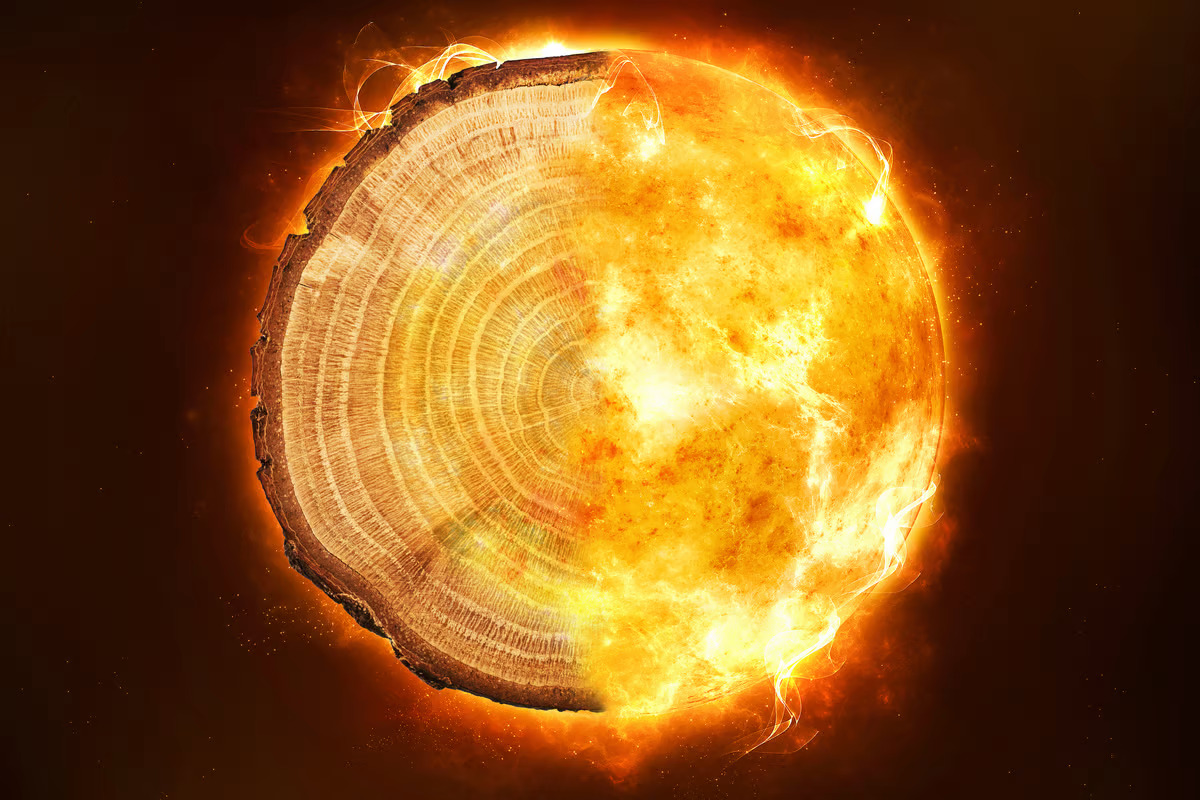 Tree rings can preserve a record of astrophysical events like solar flares. University of Queensland
Tree rings can preserve a record of astrophysical events like solar flares. University of Queensland–
In 1859, less than a day after huge solar flares were spotted by astronomers, Earth was struck by the most intense geomagnetic storm on record. Strong aurora were visible almost all the way to the equator, telegraph systems shorted out and fires were even sparked in telegraph stations. This became known as the Carrington Event.
But it wasn’t the first, it won’t be the last, and it may not even be the strongest. Natural records preserved in tree rings show that an event about 10 times stronger struck around the year 774 CE, which would push the limits of what the Sun is capable of producing. In fact, over the last 10,000 years or so, there are six known major radiation spikes, dubbed Miyake events.
If something like this was to hit today, the results would be catastrophic for our extensive power grids and communications networks, with predictions that it would take years to recover. So to gain a better understanding of them, researchers at the University of Queensland investigated the historical record of Miyake events to find out how strong they were and when they occurred in relation to the regular cycles of the Sun.
To do so, the team developed a system to analyze huge amounts of existing data on tree rings from around the world, and model the global carbon cycle over the last 10,000 years. In particular, they were looking for carbon-14, a radioactive isotope that’s produced when cosmic radiation strikes the Earth’s atmosphere. This is then taken up by trees as they grow, preserving the record within their rings. Sudden, sharp spikes of carbon-14 can indicate large radiation storms from space.
In doing so, the scientists realized something strange, and a little disturbing. Miyake events are generally thought to be large solar flares, so they expected to find them clustered around the solar maximum – the most active phase in the Sun’s 11-year cycle. But this wasn’t the case, and in some events the effects seemed to last longer than would be expected with flares. An event in 663 BCE, for example, seemed to last three years, while one in 5480 BCE increased over an entire decade.
“We’ve shown they’re not correlated with sunspot activity, and some actually last one or two years,” said Qingyuan Zhang, first author of the study. “Rather than a single instantaneous explosion or flare, what we may be looking at is a kind of astrophysical ‘storm’ or outburst.”
Other possibilities include supernovae, gamma ray bursts and magnetar outbursts, but the team says there’s no evidence of these in the sky today. For reference, a supernova recorded in 1054 is still visible now as the Crab Nebula.
With the origins of these events still unknown, the team says that further work is crucial to better understand them – including when they might strike in future and how we could prepare.
“Based on available data, there’s roughly a one per cent chance of seeing another one within the next decade,” said Dr Benjamin Pope, lead author of the study. “But we don’t know how to predict it or what harms it may cause. These odds are quite alarming, and lay the foundation for further research.”
The study was published in the journal Proceedings of the Royal Society A.
Source: University of Queensland via ABC
–
–























